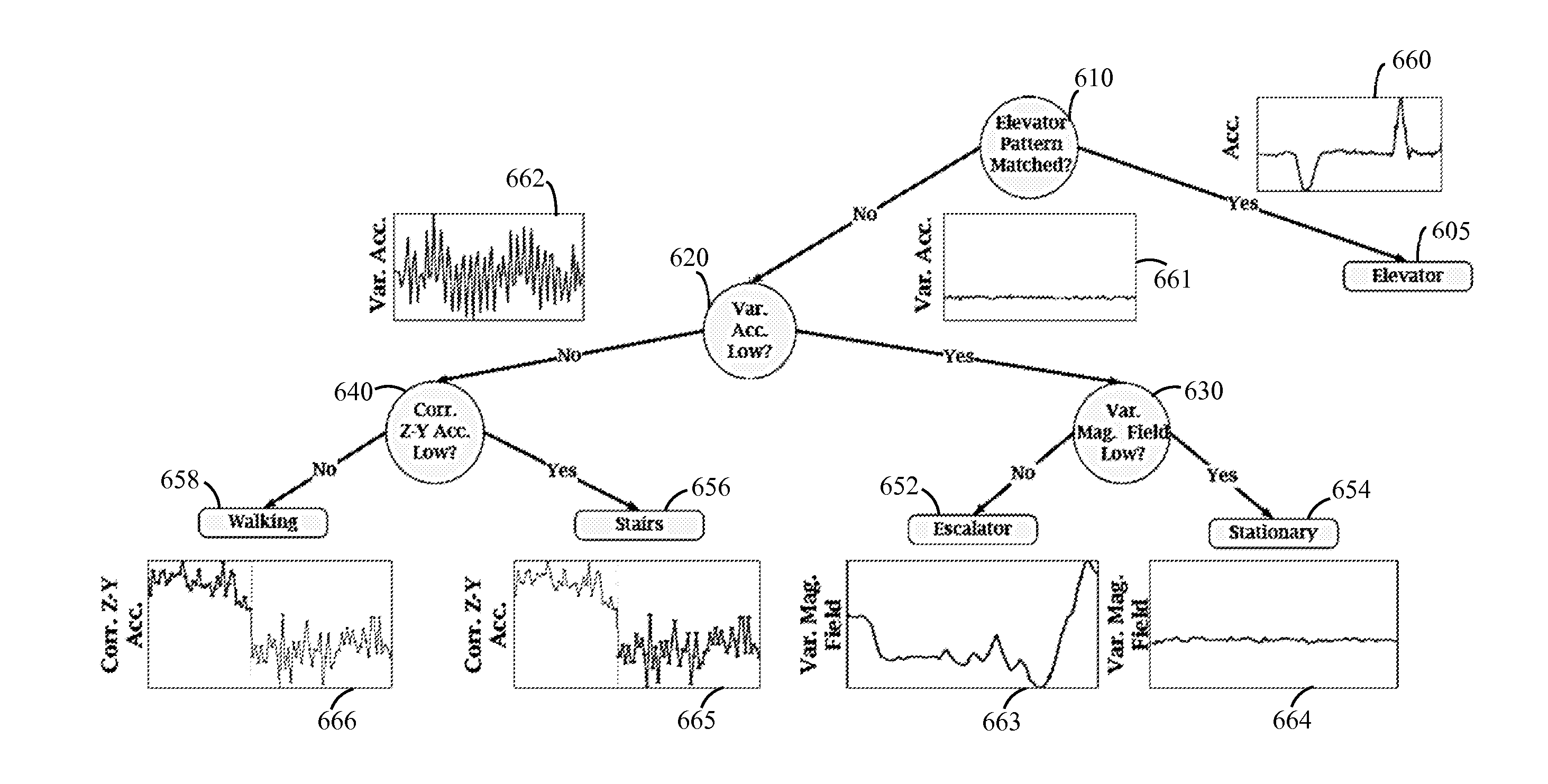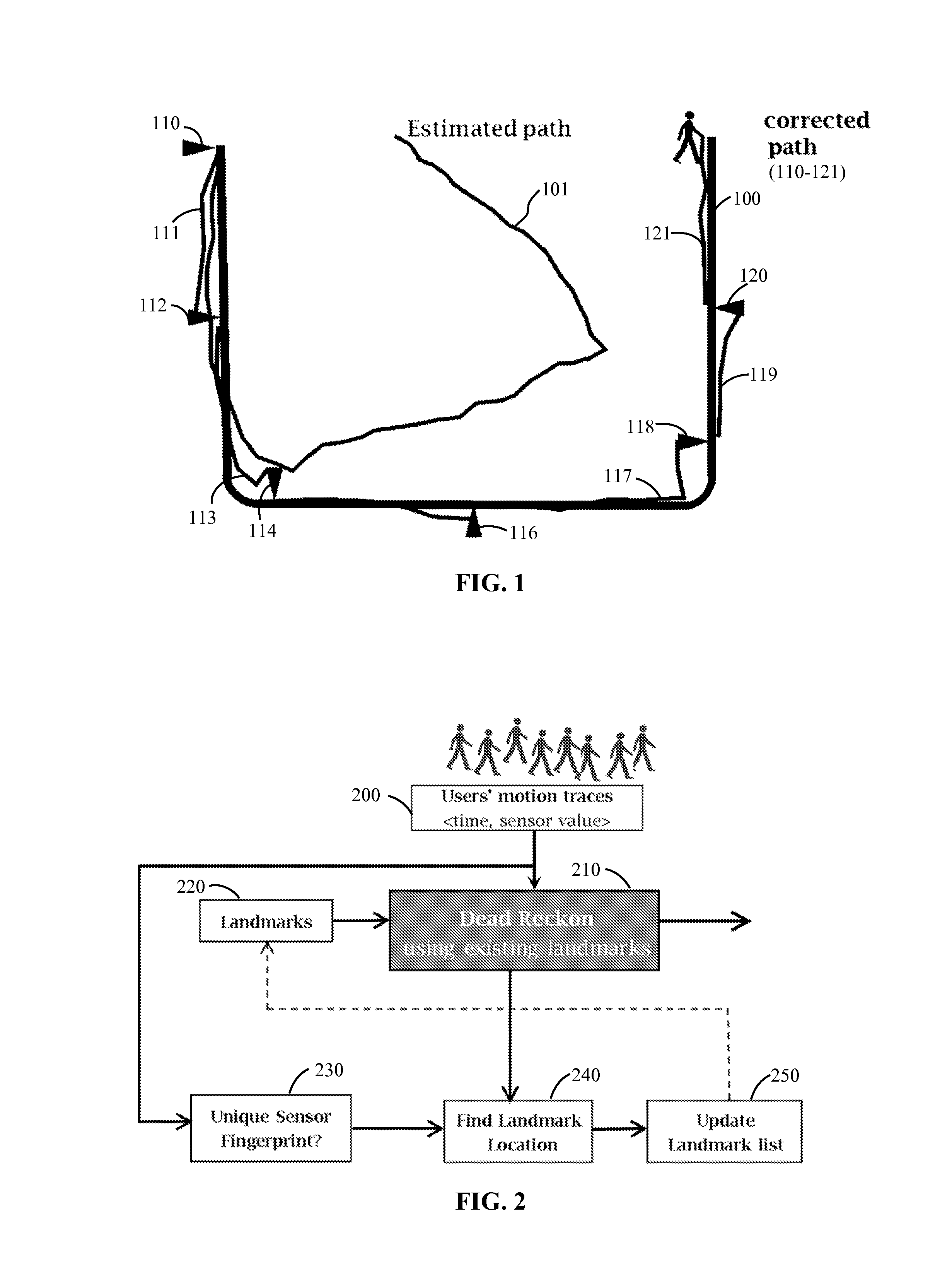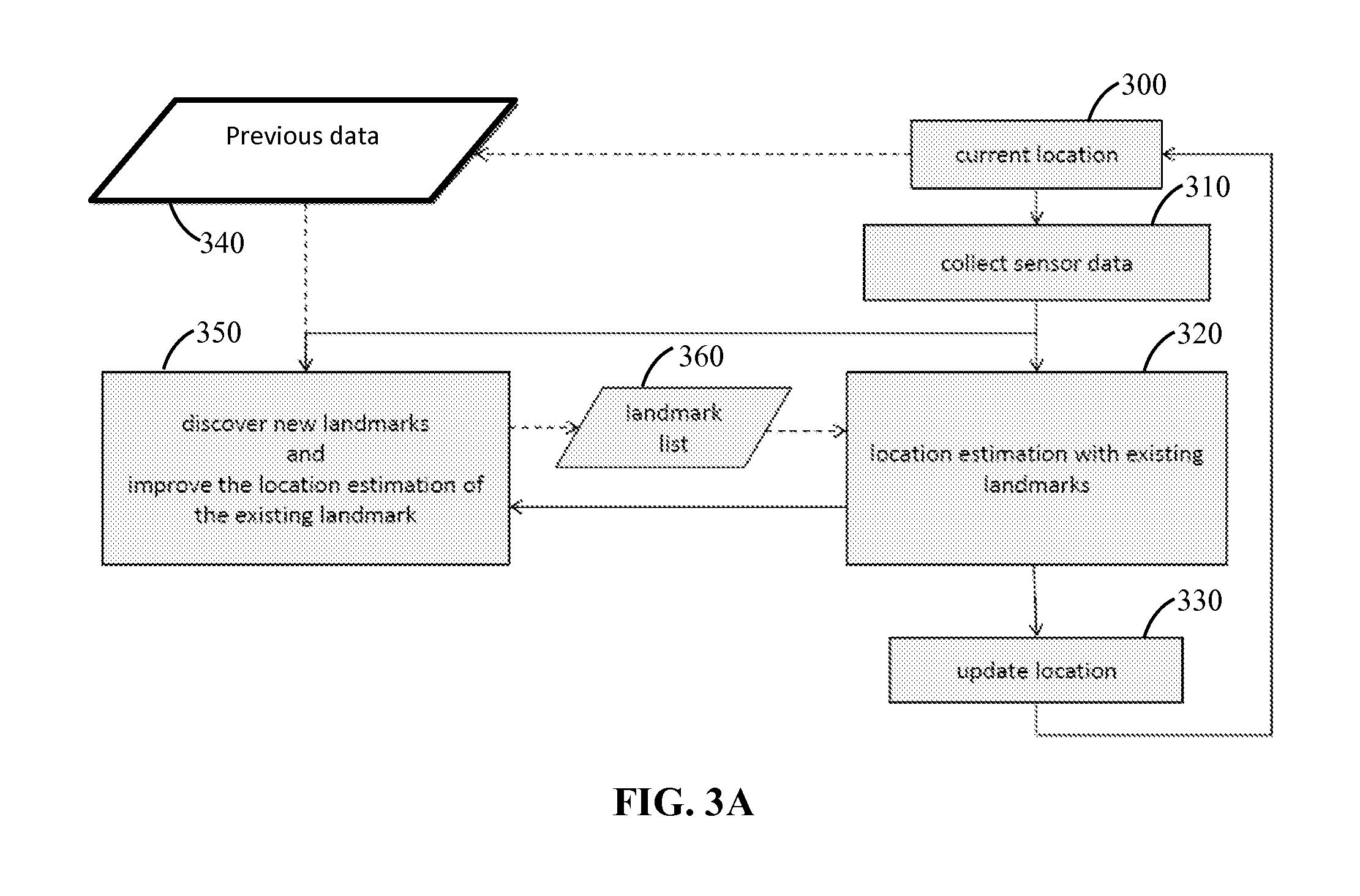Unsupervised indoor localization and heading directions estimation
- Summary
- Abstract
- Description
- Claims
- Application Information
AI Technical Summary
Benefits of technology
Problems solved by technology
Method used
Image
Examples
example 1
[0196]Experiments were performed in the computer engineering building at Duke University in Durham, N.C., United States of America. Volunteers were asked to carry NexusS phones in their pockets and walk naturally in one wing of the building. A system according to an embodiment of the subject invention was implemented on the mobile phone of each user. The system recorded the accelerometer and compass readings of each user and extracted from these reading the tuples. To record ground truth, different doors and windows in the building were marked with a distinct number, and when a user passed by that number, the user entered it into the phone. Since the mapping between the number and the door / window was known, ground truth could be extracted. Ten traces were gathered, each starting from the entrance of the building. Trace-based analysis was performed to understand how the dead-reckoned path diverged from the true path, with varying number of landmarks.
[0197]FIGS. 21 and 22 show plots ...
example 2
[0199]An indoor space is likely to have many areas, of varying sizes, within which all locations overhear a distinct set of WiFi APs. FIG. 23 shows a plot of the cumulative distribution function (CDF) of the sizes of these areas in the engineering building at Duke University. While most of the areas are quite large, explaining why simple WiFi-based localization is not very accurate, there are a few areas (at the left side of the X axis) that are very small. Systems and methods of the subject invention can exploit these small areas as an LM. If one of these small areas overhears a set of WiFi APs, denoted W, then a mobile device overhearing the same set can be assumed to be within that area. Since the area is small, the localization error of the phone will be small too, enabling a location recalibration. Measurements showed that in two floors of the engineering building, eight and five such WiFi landmarks exist, respectively, each of an area less than 4 m2. Thus, WiFi APs can offer L...
example 3
[0200]K-means clustering was executed on accelerometer and compass measurements obtained in Example 1. For each cluster, members were mapped to their corresponding physical locations (using ground truth). For most clusters, the member locations were widely scattered in space, and hence, were unusable as a LM. However, members of a few clusters proved to be tightly collocated in space as well. A unique / stable magnetic fluctuation was discovered near the networking lab within the engineering building. Another location with a distinct accelerometer signature—a pair of symmetric bumps in opposite directions—was also discovered. FIG. 24 shows a plot of acceleration versus time for this signature. Referring to FIG. 24, this accelerometer signature occurred inside an elevator, caused by the elevator starting and stopping. Though, the system need not understand the semantic meaning of these signatures.
[0201]The direction of the bumps (upward or downward) indicated whether the user went upst...
PUM
 Login to View More
Login to View More Abstract
Description
Claims
Application Information
 Login to View More
Login to View More - R&D
- Intellectual Property
- Life Sciences
- Materials
- Tech Scout
- Unparalleled Data Quality
- Higher Quality Content
- 60% Fewer Hallucinations
Browse by: Latest US Patents, China's latest patents, Technical Efficacy Thesaurus, Application Domain, Technology Topic, Popular Technical Reports.
© 2025 PatSnap. All rights reserved.Legal|Privacy policy|Modern Slavery Act Transparency Statement|Sitemap|About US| Contact US: help@patsnap.com



